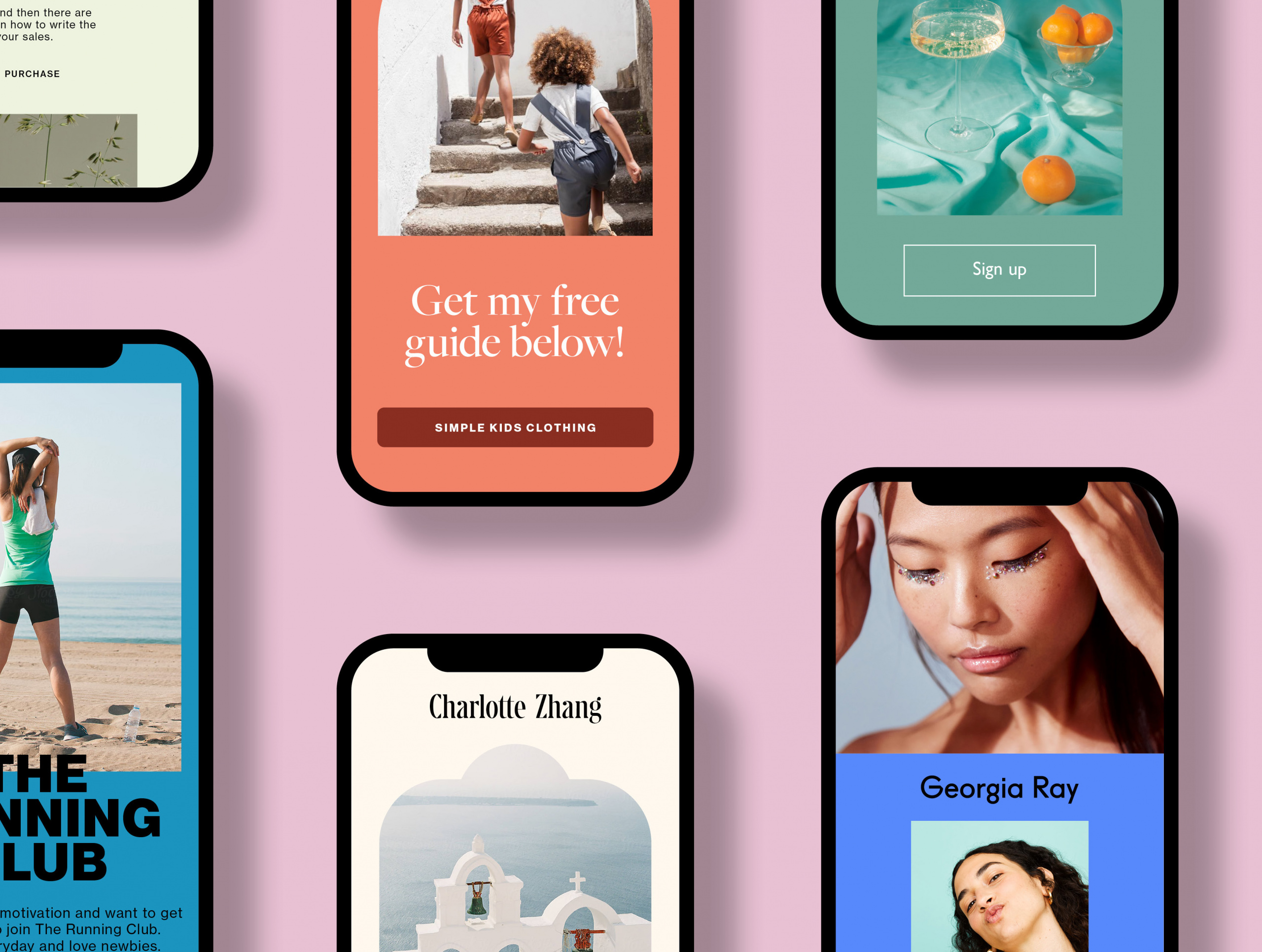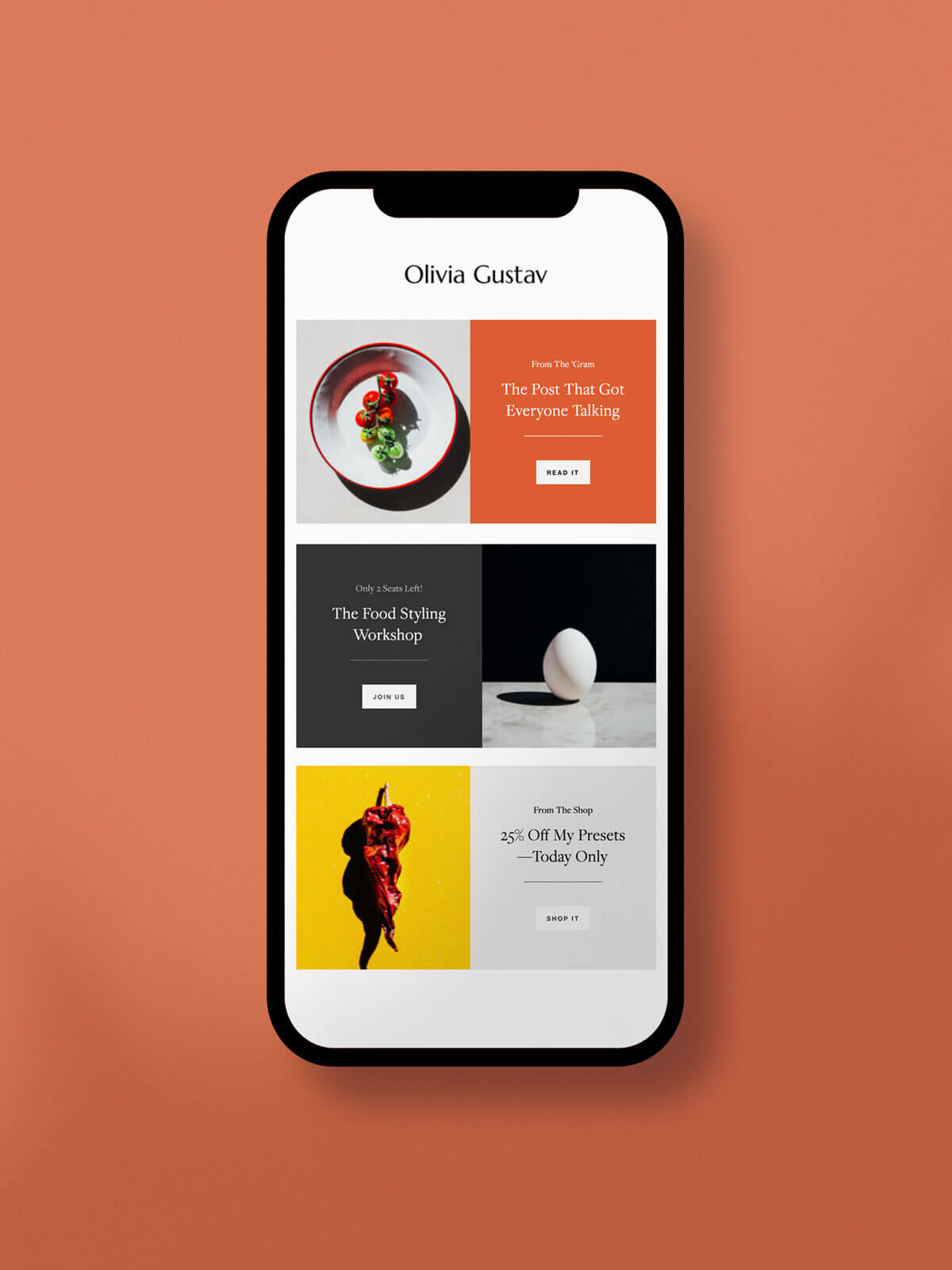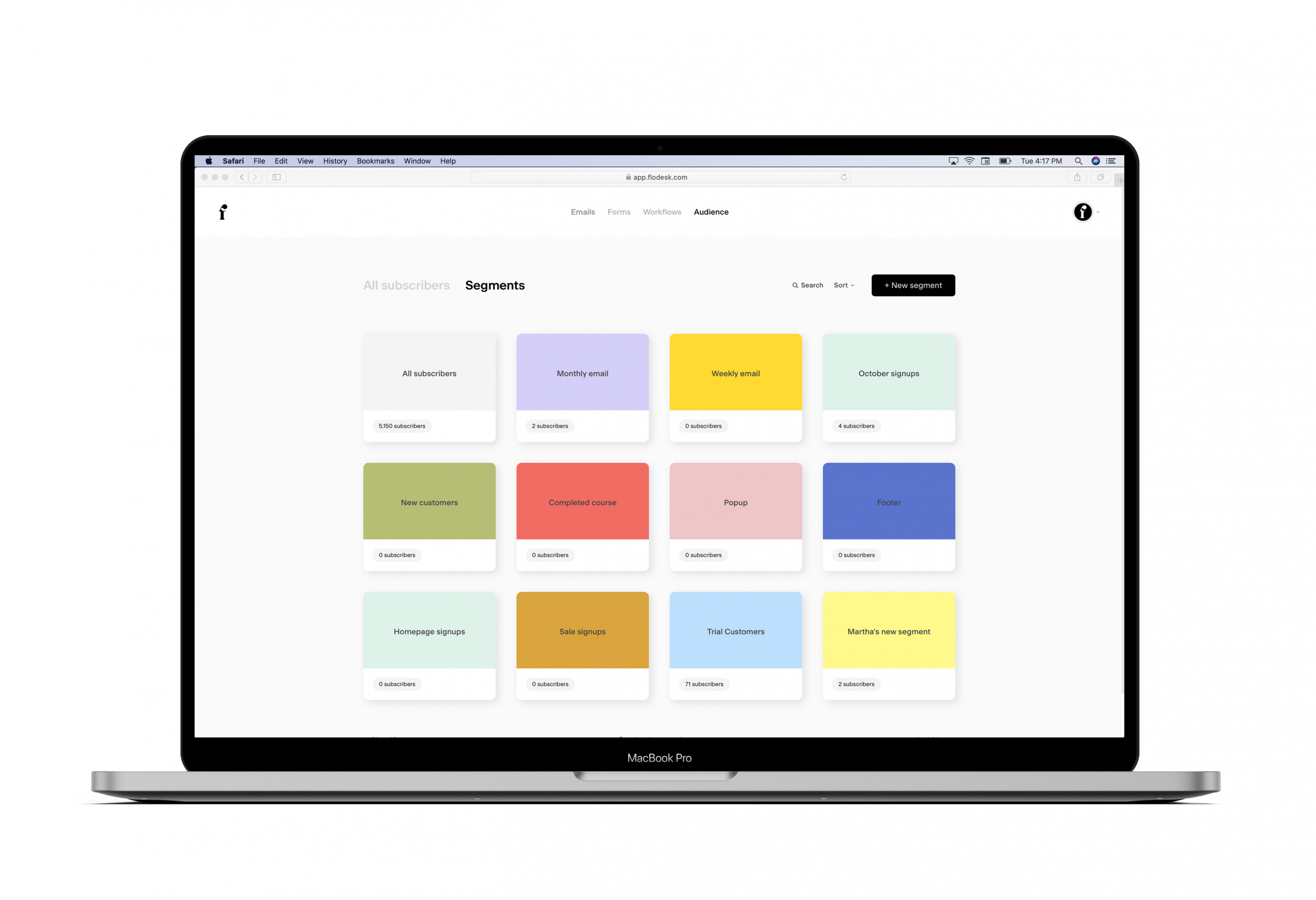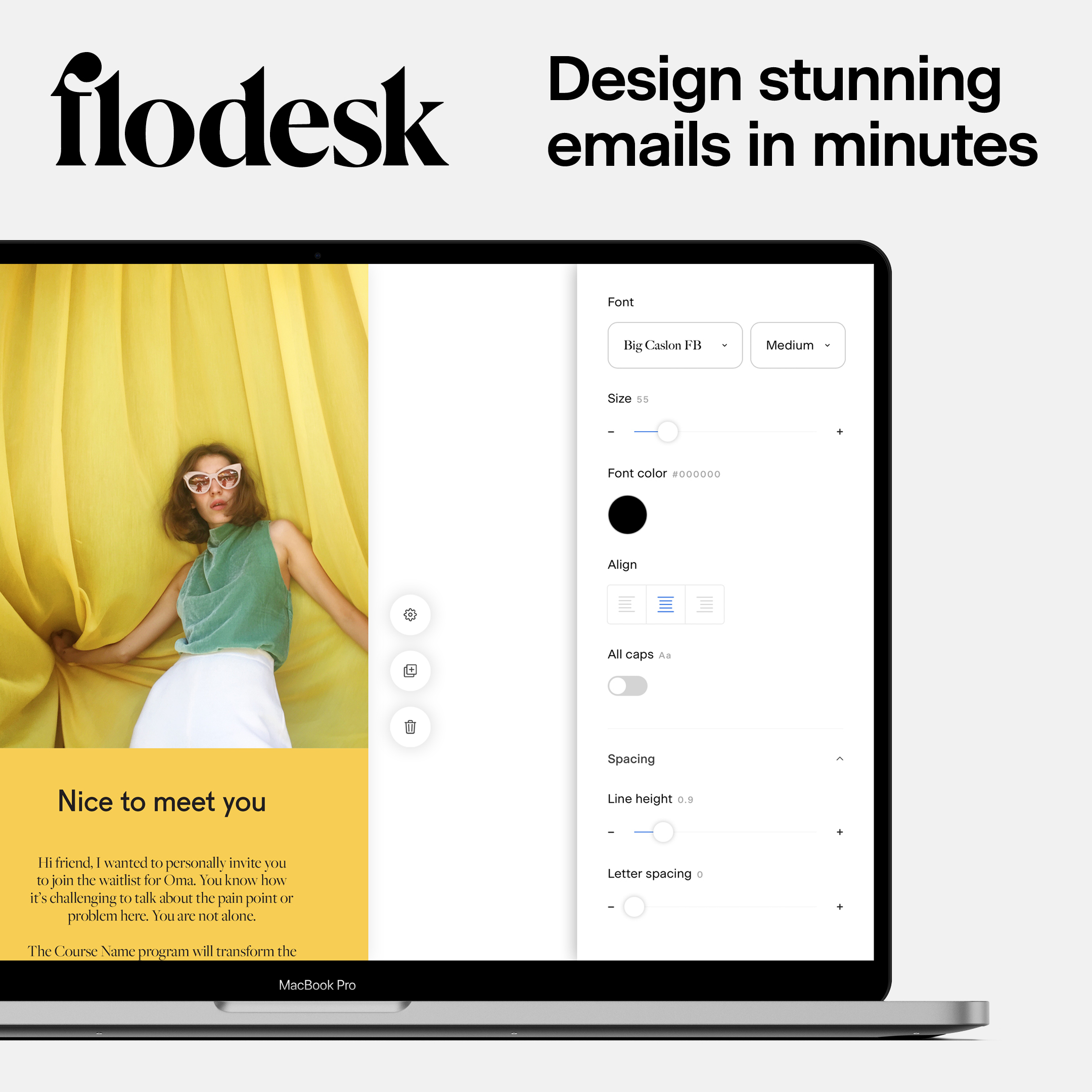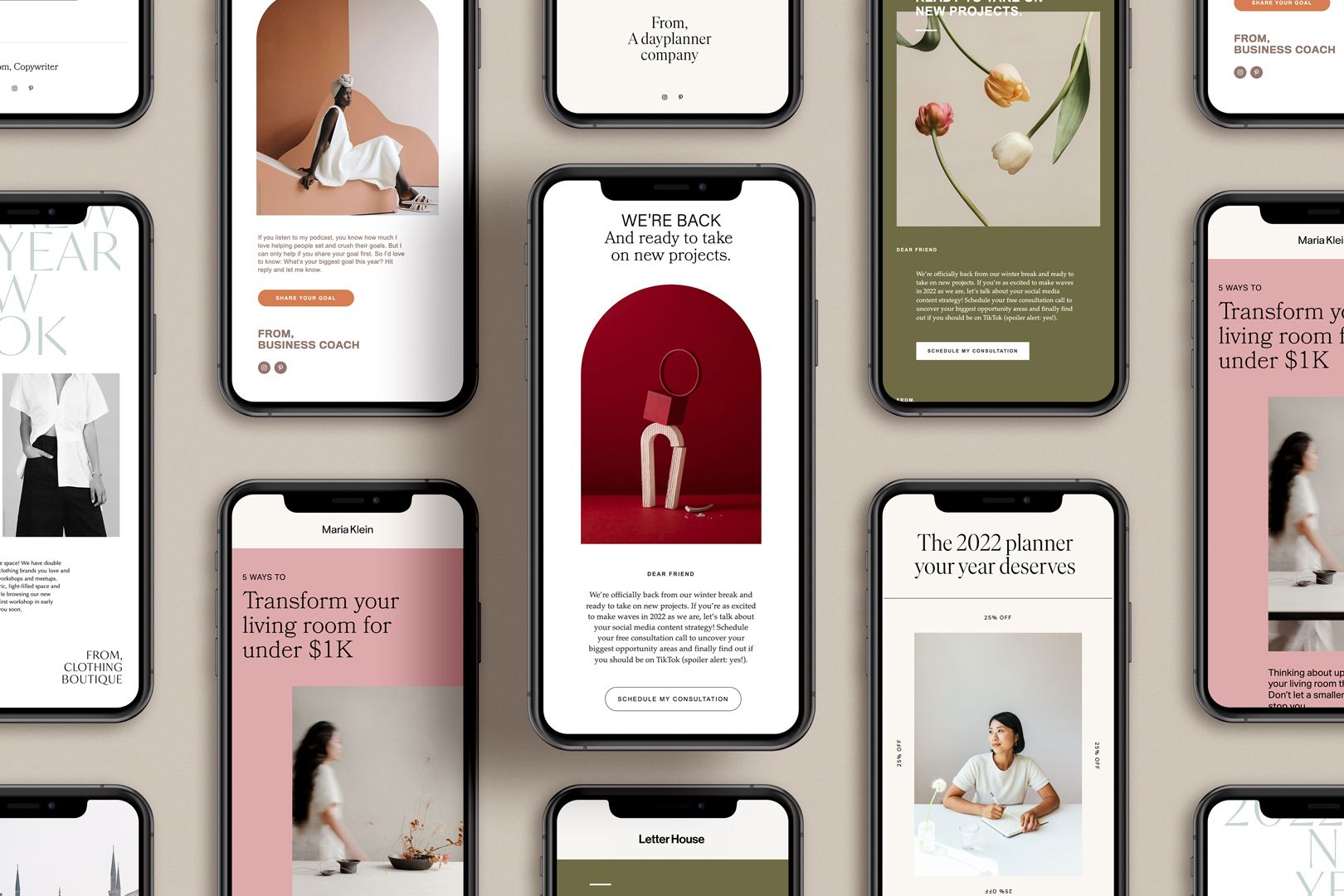How to Write an Invitation Email for an Event That Earns RSVPs
Table of Contents Jump to:
Jump to:
Table of contents
Email marketing is a great strategy when it comes to promoting an upcoming event. In fact, 78% of event creators say email marketing is their most effective marketing tactic. And for those who track it, 45% of event ticket sales can be attributed to email.
So how exactly do you write an event invitation email—especially one that earns RSVPs? We’re going to walk you through the entire process, from event email fundamentals to best practices and pitfalls.
Getting started: the fundamentals of event invitation emails
Event emails are basically like digital invitations. You want to give readers the who, what, where and when while also making it nice to look at. With that in mind, event invitation emails should include the following elements:
- A catchy subject line
- Important event details (like date, time, location, etc.)
- Compelling language in the email body
- A strong CTA to encourage RSVPs
- A well-designed email layout
Get unlimited email sends & subscribers with Flodesk
We’ll never increase pricing because your email list is growing
1. A catchy subject line
An email subject line is the first thing readers see in their inbox and it can make or break the chances of your email being opened at all. In fact, 47% of recipients choose whether or not to open emails based on the subject line alone.
In the Flodesk University course, How to Write Click-Worthy Email Subject Lines, Emilie Steinmann gives the following advice:
- Keep it concise and front load power words
- Keep it cool by writing the way you talk and using emojis
- Use numbers and data to pique interest and capture attention
- Make sure to deliver on the promise made in the subject line
Another important consideration when crafting your subject line is the length. If you look through your own inbox, you’ll quickly realize there’s not much space to work with—especially if you’re on a mobile device.
The optimal length of a subject line varies, but a study from Marketo shows that 7 words seems to be a sweet spot, garnering the highest engagement metrics compared to subject lines with 4 – 10 words.
2. Important event details
Once you’ve hooked readers with your subject line, it’s time to give them the deets. Readers want to know the what, when and where of your event right off the bat, so place this information at the top of your email.
Make sure to include the following details in your event invitation, if they apply:
- Event name
- Event date
- Time and duration
- Location (or platform for online events)
- Theme or purpose
- Speakers or special event attendees
- Entertainment
- Agenda or schedule of events
- Dress code
- Food and drink menu
- Cost or ticket prices
- Information about meals and lodging (if travel is required)
- Link to the registration form
3. Compelling language in the event email body
Once readers have taken in the event details, their eyes move onto the next element: the body of the email itself. This is where you need to use compelling language to keep the good vibes going, guiding the reader towards your main call to action (which we’ll get to next).
Admittedly, the word “compelling” gets thrown around a bit too much when it comes to copywriting. But, while it’s starting to feel overused, it really hits the nail on the head. Take a look at the Oxford definition for compelling:
“Evoking interest, attention, or admiration in a powerfully irresistible way.”
It’s just hard to find a better way to describe what you want your email invitations copy to do, lol. So, we’re just going to embrace it. Here are some tips for writing compelling copy:
- Use actionable language
- Write like you talk (use contractions, an informal tone, etc.)
- Write in the second person (you, yours)
- Focus on clarity first, cleverness second
- Make your message relevant to the reader
- Focus on benefits, not features
4. A strong CTA to encourage RSVPs
With an event invitation email, there’s a clear action that you want readers to take—RSVPing for your event. So you want to include a strong call-to-action (CTA) that makes it easy for readers to RSVP right from the email.
If you’re new to email marketing and wondering what a CTA is, it’s just a prompt within your email that asks readers to do something. A CTA is usually written as a command or action phrase (Sign Up Now) and typically takes the form of a button or hyperlink.
Your goal with a CTA is typically to get click-throughs—you want your reader to click on a link in your email. In the case of event invitation emails, you want your reader to click on a link and sign up for your event.
We recommend limiting yourself to one CTA per email message to avoid confusion in the reader’s mind. For example, if you have one CTA asking readers to RSVP and another (in the same email) asking them to visit your landing page and get a freebie, your reader won’t know which to do. In the end, they’ll wind up doing nothing.
Here are some action verbs you can use in your event invitation CTA. They’re designed to maximize click-throughs because they tell your reader exactly what you want them to do:
- Click
- Download
- Sign up
- Join
- Follow
- Submit
- Learn
- Subscribe
To create a sense of urgency in your event invitation CTA, use these words:
- Reserve
- Now
- Free
- Try
- Increase
- Get
- Start
- Instant
To learn more about CTA’s, read “How to Write Email Copy That Gets More Opens, Clicks and Sales.”
Get unlimited email sends & subscribers with Flodesk
We’ll never increase pricing because your email list is growing
5. A well-designed email invitation layout
The final element critical to sending a successful event invitation email is a well-designed layout. This ties everything together and presents all the other elements in a way that’s easy for the reader to digest. Here are some things to consider when choosing or designing a layout:
- Make your content skimmable so readers can move quickly through your message
- Focus on readability by using enough color contrast (dark text, light background) and choosing an appropriate font.
- Use newsletter graphics and visuals to create a focal point and get your point across quickly.
Best practices for writing an event invitation email
Now that you know the basic elements of an event invitation email, we’re going to give you some insider tips to get those RSVPs rolling in.
1. Use exclusivity and urgency in your subject lines
The average open rate of all event-related emails is 28%. But subject lines that create a sense of urgency or exclusivity can boost open rates by an additional 22%, nearly doubling the average.
Urgency works by creating a reason for people to act sooner than later. It’s a natural fit with an event invitation as people are used to having to RSVP by a certain date. When you look at other event email examples, you can see they use other incentives to encourage readers to sign up as soon as possible. Here are some examples:
- Early bird discounts (if your event is paid)
- Free download for first X number of registrants or for anyone who registers by a certain date
- Special discount code for first X number of registrants or for anyone who registers by a certain date
- Exclusive access to something at the event
- Upgraded experience during the event
- Sneak peek or early access to something of value
As for exclusivity, you can create this feeling in an event invitation by using words that let readers know this event isn’t open to just anyone—that they’re on the “It list” so to speak. Phrases like “exclusive invite” or “Subscribers only” will do the trick.
2. Segment your audience
Speaking of exclusivity, it’s a good idea to segment your audience with targeted email marketing tactics when sending event invitation emails. For example, let’s say you’re sending out webinar invitation emails to get subscribers to RSVP for a free webinar event about the latest email marketing trends.
Let’s also say that you offer a free download about email marketing on your website. If you segment your target audience into groups, you’ll be able to target subscribers who have already downloaded your email marketing guide—demonstrating an interest in the subject.
Then, you can mention in your email that the webinar would be a great add-on to the free guide that they downloaded, making your message super relevant to the reader.
3. Deliver a clear value proposition
When crafting the body of the email, it’s important to explain to readers why this event is valuable to them. In other words, “What’s in it for me?”
One of the best ways to do this is to focus on benefits over features. Features describe attributes of your event in general, typically focusing on things that set it apart from the competition. Benefits, however, describe why those features matter to your potential attendees.
Using benefit-focused messaging allows you to communicate exactly how your event will help them. What part of their daily life will be improved by attending this event? Will it save them time? Help them earn more money? Eat healthier?
Once you’ve identified the specific benefits of your event, communicate them clearly in the body of your email.
4. Use graphics and visuals to improve your click-through rates
Emails with imagery have a 42% higher click-through rate than those without. And since your main goal with an event invitation email is to get readers to click through and RSVP, visuals are going to be your friend.
If you’re using Flodesk, this is the fun part. As the fastest-growing email marketing company, Flodesk makes email marketing beautiful—and truly easy to use. Combining design with simplicity, Flodesk helps small business owners create emails people love to get.
Flodesk’s curated template gallery makes it easy for members to quickly customize their emails and forms, elevating their brand for maximum engagement and conversion. The intuitive email builder includes drag-and-drop functionality as well as Flodesk’s innovative and proprietary Layout blocks.
With Layouts, members no longer need to use third-party software like Canva or Illustrator. Instead, to create custom graphics they simply add a new Layout to create incredible designs with specialty fonts right within the email builder.
5. Personalize your email as much as possible
Personalization is another good way to elevate your event invitation email. In fact, something as simple as including a personalized subject line by adding the reader’s name in it can improve open rates by as much as 26%.
You can also personalize your email based on demographics or preferences. According to a study by the Direct Marketing Association, targeted emails generate 58% of all revenue for the marketers surveyed.
Get unlimited email sends & subscribers with Flodesk
We’ll never increase pricing because your email list is growing
Pitfalls to avoid when writing an effective event invitation email
Now it’s time to go over a few things not to do when writing an event invitation email.
- Looking like spam
As an email marketer, you’ve probably already developed a healthy fear of the spam folder (and with good reason). To make sure your event invitation email doesn’t end up there, avoid using lots of special characters in the subject line and stay away from ALL CAPS.
Also, avoid words that are considered “spammy”. These include things like: apply now, cash bonus, double your income, earn $, earn extra cash, eliminate debt, and more.
- Using a generic sender name
Another shortcut to the spam folder is using a generic sender name like marketing@gmail.com. It’s much better to have a familiar name in the sender email, along with your company name.
Even worse is using a “no reply” sender address like noreply@company.com. Many readers see these names and automatically think it’s junk—sending your email straight to the dungeon before even seeing the magic inside.
- Burying important event details at the bottom
It may sound like a good idea to stick important details at the bottom, thinking people will have to read all of your other stuff to get to what they want.
But not only is this annoying, it usually just doesn’t work when it comes to email. If readers have to scroll through an entire message to find a date for an event, they may or may not even attend, they’re probably just going to bail.
- Sending walls of text
Even if the actual word count isn’t that high, a giant wall of text will send even your most loyal subscribers running. Use the following tips to break up your message into skimmable chunks:
- Use visuals like graphics, video, imagery and charts
- Leave white space between sections
- Use bold text and italics to highlight things that are important
- Use bulleted lists to present information
- Use different fonts, styles and colors
Ready to create the perfect event invitation email?
Hopefully, you’re feeling ready to send out your event invitation email now. If you’ve got an upcoming event, here’s a quick list of event invitation email examples to get your mind rolling:
- Upcoming webinar invitation email
- Online course invitation email
- Party invitation emails
- Networking event or networking opportunities
- Event announcement email
- Business event invitation email
- Exclusive sale event invitation email
- Online event invitation email
Looking for event invitation email templates for your upcoming event? Check out the article, 20 Event Invitation Email Examples to Win RSVPs.
Here’s to getting more RSVPs than you can count! You’ve got this.
